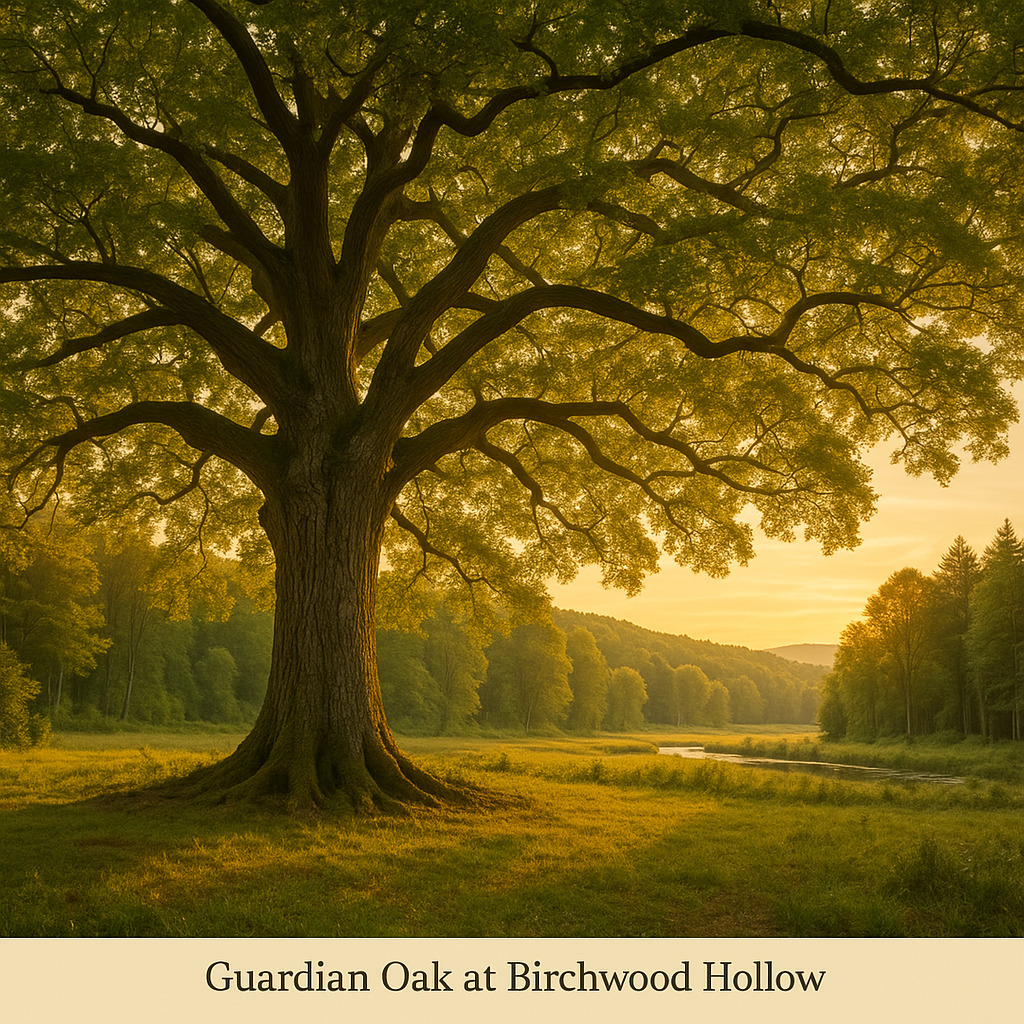Property Assessment for New Rural Landowners
Quick Answer
Successful rural property assessment requires systematically evaluating trees, water, soil, and existing infrastructure rather than relying on emotional first impressions. Use a property assessment checklist to document specific features and potential issues before making offers.

Why Proper Assessment Matters
Rural properties come with unique opportunities and challenges that standard home inspections miss. Understanding the land’s condition, potential, and limitations prevents expensive surprises and helps you make realistic stewardship plans.
Essential Assessment Categories
1. Tree Health and Diversity
Mature Tree Evaluation:
- Species diversity - Single-species plantings indicate past development, poor ecology
- Age structure - Mix of young, mature, and old trees shows healthy forest succession
- Health indicators - Dead branches, trunk damage, pest signs require professional evaluation
- Valuable specimens - Large oaks, maples, or native species add significant property value
Assessment Tools:
- Tree identification guide - - Know what you’re evaluating
- Binoculars - - Examine canopy condition safely
- Measuring tape - - Document trunk diameters for value assessment
2. Water Features and Drainage
Surface Water Assessment:
- Year-round vs seasonal - Verify water permanence through multiple visits
- Flow patterns - Understand where water goes during heavy rain
- Quality indicators - Clear running water vs. stagnant areas
- Erosion evidence - Undercut banks, exposed roots indicate problem areas
Subsurface Evaluation:
- Well water testing - Essential if property relies on private well
- Septic system condition - Expensive to replace, critical to evaluate
- Wet areas - Identify drainage problems before they become limitations
3. Soil Conditions and Topography
Soil Quality Assessment:
- Drainage characteristics - Well-drained vs. clayey soils affect plant options
- Depth and composition - Shallow soil over bedrock limits development
- Organic matter levels - Rich, dark soil indicates good growing conditions
- Existing vegetation - Thriving native plants suggest good soil health
Topography Evaluation:
- Slope steepness - Affects erosion, accessibility, building options
- Aspect (north/south/east/west facing) - Determines microclimates
- Elevation changes - Creates diverse growing conditions
Testing Tools:
- Soil test kit - - pH and nutrient levels
- Soil auger - - Examine soil depth and layers
4. Invasive Species Assessment
Common Problem Species:
- Multiflora rose - Dense, thorny shrubs that dominate areas
- Autumn olive - Aggressive shrub that crowds out natives
- Japanese knotweed - Extremely difficult to eradicate
- Garlic mustard - Biennial herb that forms dense mats
Assessment Priority:
- Coverage extent - Small patches manageable, large infestations expensive
- Species aggressiveness - Some invasives harder to control than others
- Treatment costs - Factor removal costs into purchase decision
5. Infrastructure and Access
Essential Systems:
- Road access - Year-round reliability, maintenance responsibilities
- Utilities availability - Electric, phone, internet service quality
- Building conditions - Structural integrity, major system age
- Outbuilding potential - Storage, workshop, equipment needs
Step-by-Step Assessment Process
1. Initial Reconnaissance (1-2 hours)
- Walk the entire property boundary
- Identify major features: trees, water, buildings, problem areas
- Take photos with smartphone or digital camera
- Use assessment checklist to ensure nothing missed
2. Detailed Documentation (3-4 hours)
- Measure and map significant trees
- Test soil in multiple locations
- Identify plant species present
- Note drainage patterns and wet areas
- Document infrastructure conditions
3. Professional Consultations
- Arborist evaluation for valuable trees
- Well/septic inspection if applicable
- Survey verification of property boundaries
- Environmental assessment for contamination risks
What You’ll Need
Essential Assessment Equipment:
- Property assessment checklist - - Systematic evaluation guide
- Soil test kit - - pH and nutrient analysis
- Tree identification guide - - Regional species reference
- Digital camera - - Documentation photos
Professional Tools:
- Measuring tape (100ft) - - Property measurements
- Soil auger - - Soil depth testing
- pH meter - - Accurate soil pH
- Binoculars - - Canopy inspection
Documentation Supplies:
- Weatherproof notebook - - Field notes
- Survey stakes - - Mark important features
- Smartphone apps - Free - GPS, plant ID, mapping (iNaturalist, AllTrails, etc.)
Total Assessment Kit: -350
Iris’s Experience: Finding Birchwood Hollow
I spent 2 years looking at rural properties before finding mine. Here’s what I learned about the assessment process:
The First Visit Mistake: I initially fell in love with properties based on single dramatic features - a beautiful view, one magnificent tree, or perfect creek access. These emotional responses led me to overlook serious problems.
The System That Worked: I developed a 3-visit rule:
- Initial viewing - General impression and major features
- Assessment visit - Full systematic evaluation with checklist
- Weather test - Return during/after rain to see drainage
What I Almost Missed: At Birchwood Hollow, I was so captivated by the 150-year-old oak that I nearly overlooked the extensive multiflora rose infestation. Only systematic documentation revealed how much of the property was compromised by invasives.
Best Discovery: The property’s connection to state forest wasn’t mentioned in listing. I discovered it by walking the back boundary. This feature - permanent protected neighbor - added significant value.
Assessment Investment: in evaluation tools and professional consultations saved me from a septic system surprise on a different property.
Common Mistakes to Avoid
Relying on single-season visits - Properties look dramatically different across seasons. What seems like a “dry” area in summer might be swampy in spring.
Ignoring invasive species - Small patches of invasives become large management problems. Factor removal costs into your budget before buying.
Skipping professional inspections - Wells, septic systems, and electrical service in rural areas have unique issues that require specialist evaluation.
Underestimating access needs - That charming seasonal road might be impassable in winter. Consider year-round accessibility for emergency services.
Falling in love before due diligence - Emotional attachment clouds judgment. Complete systematic assessment before making offers.
When to Walk Away
Deal Breakers:
- Contamination evidence - Oil stains, unusual vegetation die-offs, strong chemical odors
- Extensive invasive dominance - More than 30% coverage by aggressive species
- Severe erosion issues - Active gullying, large areas of exposed soil
- Utility service problems - No reliable power, water, or emergency access
- Neighbor conflicts - Boundary disputes, access issues, incompatible land uses
Cost Breakdown
DIY Assessment: -350
- Purchase assessment tools and do evaluation yourself
- Suitable for properties under
Professional Assessment: -1,200
- Includes arborist, septic, well, and environmental evaluations
- Recommended for higher-value properties or complex situations
Iris’s Investment: total
- in assessment tools (reusable for future properties)
- in professional consultations for specific concerns
ROI: Good assessment prevents costly surprises - easily -20,000 in avoided problems
Next Steps
Before Property Visits:
- Research local soil types, climate patterns, and common invasive species
- Identify professional services available in your target area
- Prepare assessment kit and documentation system
During Assessment:
- Schedule multiple visits across different weather conditions
- Document everything systematically, not just highlights
- Get professional opinions on major concerns
After Assessment:
- Compare findings across multiple properties objectively
- Factor remediation costs into purchase budget
- Plan realistic timeline for improvement projects
Related Planning Guides:
- Creating stewardship plans for new properties
- Budgeting for rural property improvements
- First-year priorities for new landowners
Remember: The goal isn’t to find the perfect property - it’s to find the right property for your goals and realistic management capacity. Thorough assessment prevents surprises and enables informed decisions.
